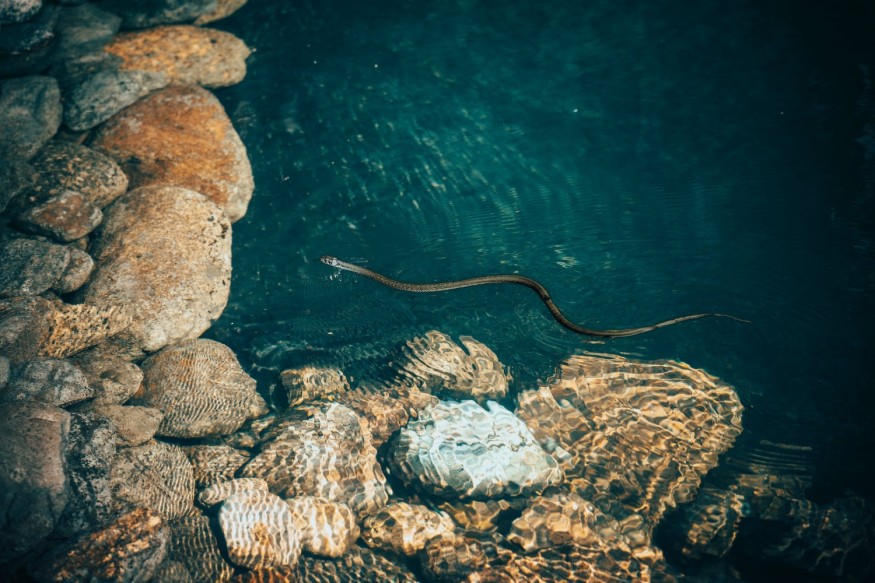
The sea snake appears to have developed the capacity to perceive a wider range of colors after losing that ability in reaction to changing circumstances.
In a study published in Genome Biology and Evolution, lead author Isaac Rossetto of the University of Adelaide and his team examined the published reference genomes and gene data on Hydrophis cyanocinctus, or the annulated sea snake, a species of venomous snake found in tropical and subtropical regions of Australia and Asia, by focusing on the visual opsin genes.
The researchers discovered that annulated sea snakes have four complete copies of the visual opsin gene SWS1. Two have ancestral UV sensitivity, while the other two have evolved a new sensitivity to the longer wavelengths that dominate today's ocean ecosystems.
"The earliest snakes lost much of their ability to see color due to their dim-light burrowing lifestyle. However, their sea snake descendants now occupy brighter and more spectrally complex marine environments. We believe that recent gene duplications have dramatically expanded the range of colors sea snakes can see," Rossetto said.
Extremely rare to regain color vision
Many species, especially tetrapods - a group of animals including amphibians, reptiles and mammals, have lost opsins as they adapted to new settings throughout their evolutionary history, but opsin regain are extremely unusual.
Although scientists do not know yet when this gene was regained and then du Previous studies revealed that some of H. cyanocinctus snakes have the SWS1, but it is not widely distributed, and individuals have it more as a "genetic lottery."
The researchers also analyzed the entire genetic data from five snake species in the Elapidae family, including the blue-banded sea snake, cobras, and mambas, to determine if they all have this SWS1 color gene.plicated, it shows that the snake's ability to detect color is not a result of chance.
"We know and appreciate color vision, but there are almost no other snakes within all 4000 snakes that have it as good as us," Rossetto said, as quoted by New Scientist. "We now think that there is a group of very interesting marine snakes that do."
The first evidence of color vision in the annulated sea snake was published in 2020, but this new study reveals that it is due to gene duplication rather than gene polymorphism. This implies that the species' extended color vision is more frequent than previously expected.
"It's unique and interesting that these snakes appear to be gaining and diversifying their opsins, when other land-to-sea transitioned animals have done the opposite," the researchers added.
Color discrimination
The researchers suggest that the snakes could have color discrimination, which helps them identify predators from prey and possible snake mates against the more colorful background of the water.
However, according to Yohey Terai of Japan's Graduate University for Advanced Studies, SOKENDAI, the discovery is fascinating, but just because the genes are present does not indicate they are being used to detect color in the way we might expect.
"Genome assembly often contains errors," he said.
He suggests that the researchers conduct an actual test among the snake's color vision in experiment to prove the study.
Related Video:
© 2025 NatureWorldNews.com All rights reserved. Do not reproduce without permission.





